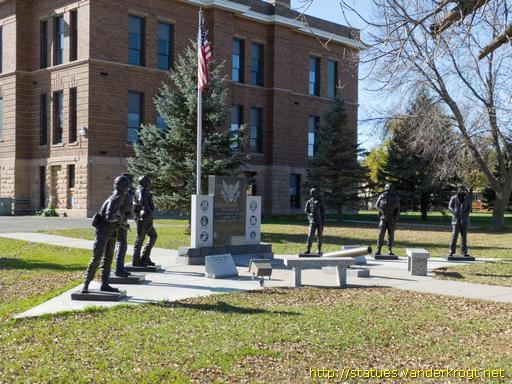Since the founding of our communities, organizations, businesses and citizens have stepped forward to build and serve their community. Click on any of the logos below to learn about those who made this website possible! If you would like to learn about becoming a sponsor CLICK HERE!
Sanborn County, SD
County in Southeast SDThis county lies toward the southeastern part or the Territory, and contains an area of about 576 square miles, or 868,640 acres.
The general surface is gently rolling prairie, and the soil principally a black, vegetable mold, though in some localities it is of a more sandy nature. In depth it averages nearly two feet, and is underlain throughout by a clay subsoil.
Sanborn county is situated on the Southern Minnesota division of the Chicago, Milwaukee & St. Paul Railway, due west from La Crosse, Wisconsin, 890 miles. It is what was once the western half of Miner county, and is as fine a county of land as is often seen.
The far-famed James or Dakota river meanders through the county from north to south nearly in the centre of the county, and hence it lies in the very heart of the James River Valley. A part of the county east of the river has been settled for some time, and has many improved farms with from fifty to one hundred acres each already under cultivation, and the quantity and quality of the crops that have been produced are not surpassed by any section of the Territory.
The country west of the river can almost be said to be the stockman's paradise. The grass starts earlier in the spring and keeps green later in the autumn than in any other section of the Territory, and the hay produced from it will keep stock growing and in good condition through the winter without grain.
Woonsocket, in the western part, on the line of the railroad, was first settled in 1883, and has since experienced a rapid and prosperous growth. The city contains upward of sixty business houses, two banks, a graded school, jail, a large flouring mill, four church organizations and three newspapers.
Forestburg, on the James river, is the oldest town in the county. Letcher and Diana are prosperous and growing towns, the former near the south line, and the latter near the eastern line of the county. All of these towns are situated on the several branches of the railroad.

- County: Sanborn County, SD
- Region: Southeast SD
Destination Sanborn County, SD
- Sponsors
- Towns
- Businesses
- Community Organizations
- Faith Organizations
- Festivals and Events
- Points of Interest
- Veterans
Learn how to contribute to any of the above categories.
Towns of Sanborn County, SD
The small towns of the Midwest are rich in history and a great way of life! Below you can visit and learn about the small towns we call home! Towns that have their name highlighted have become FEATURED TOWNS. Businesses/organizations from these towns have stepped forward as SPONSORS enabling us to include (or will include as acquired) stories and website links to ALL their community organizations (chambers, groups and departments, etc.), stories and website links to ALL their points of interest, annual festivals/events and stories done about their citizens, veterans and faith community. To learn how to become a featured town CLICK HERE!
Businesses of Sanborn County, SD
The businesses of our towns are truly the lifeblood of each community, click on any businesses below to learn about them, to learn how to add your business to your town and county page CLICK HERE!
